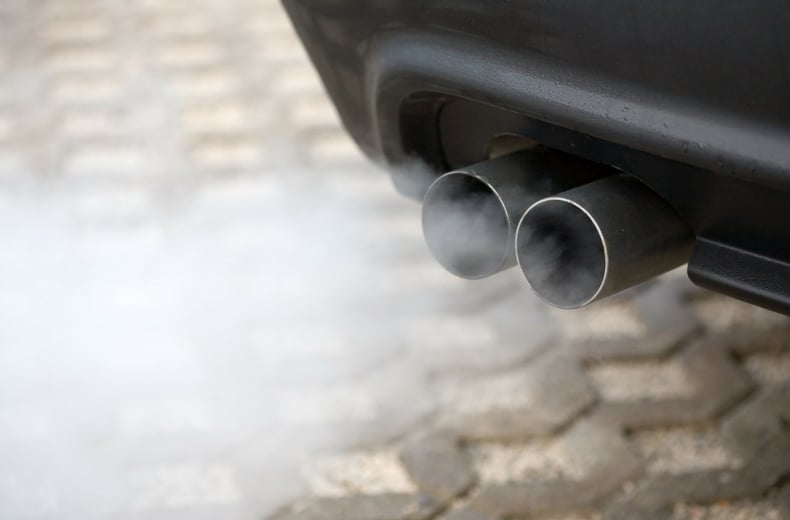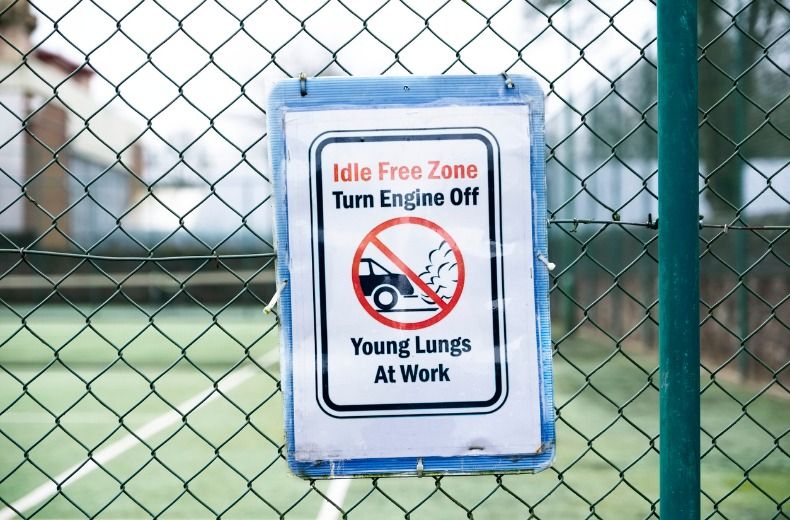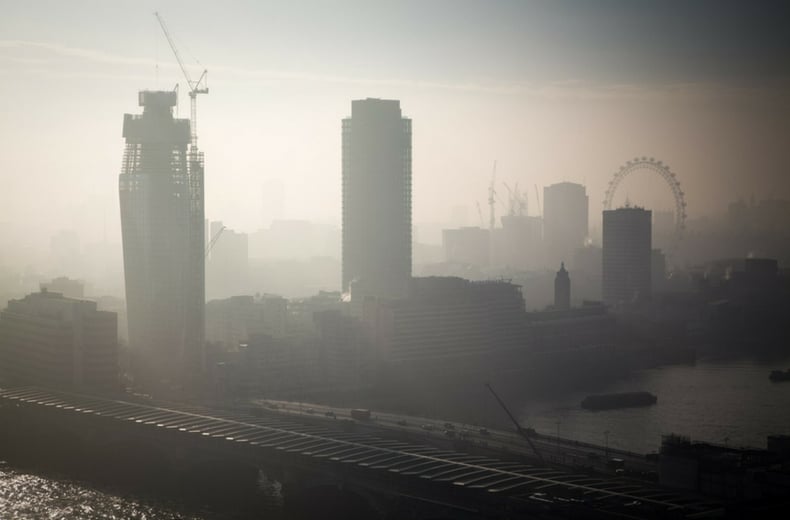The Government is working to address the issue as a whole, but what can you do to help the situation?
Cutting out engine idling will help for a start - not only will it improve air quality in congested areas but it is also a potentially fine-able offence.
We take a look at why idling is so bad for the environment and what is being done to discourage it.
What is idling?
Idling means leaving a vehicle's engine running while it is stationary.
While this is often because of everyday traffic, there are some instances – such as waiting for children outside schools and sitting in total gridlock – when idling is not necessary and should be avoided.
Why is idling bad?
Idling, instead of turning your engine off while stationary, increases the amount of exhaust emissions in the air.
These emissions contain a number of harmful gasses including carbon dioxide, which is bad for the environment and contributes towards climate change, as well as a range of other harmful gasses including nitrogen dioxide, carbon monoxide and hydrocarbons which are linked to asthma and other lung diseases.
Diesel vehicles - older ones in particular - are thought to be one of the biggest contributors to the problem due to high levels of nitrogen oxide and particulates.

MORE ADVICE: What is a hybrid car and should I buy one?
Engine idling law
Is it illegal to let your engine idle when parked?
Rule 123 of The Highway Code looks at ‘The Driver and the Environment’. It states that drivers must not leave a parked vehicle unattended with the engine running or leave a vehicle engine running unnecessarily while the vehicle is stationary on a public road.

RAC sale – up to 33% off*
• Roadside cover from £5.49 a month†
• We get to most breakdowns in 60 mins or less
• Our patrols fix 4/5 breakdowns on the spot

Can I get a fine for idling?
Some local authorities charge a £20 fixed penalty notice (FPN) for emission offences and stationary idling under The Road Traffic (Vehicle Emissions) (Fixed Penalty) (England) Regulations 2002. There’s potential for the fine to increase to £801.
However, it’s important to note that fines are imposed only if a motorist refuses to switch off their engine when asked to do so by an authorised person.
Is it illegal to engine idle outside schools?
Local authorities have the power to issue £20 fixed penalties for engine idling if a motorist refuses to switch off their engine, regardless of the location.
The penalty is given as a result of rule 123 of The Highway Code, stating that drivers must not leave a parked vehicle unattended with the engine running or leave a vehicle engine running unnecessarily while the vehicle is stationary on a public road.
Car troubles?
Book a diagnostic test with us today. RAC Mobile Mechanics will check your car for faults, talk you through any repairs you might need, and give you a report for your records.


Is it illegal to engine idle in a driveway?
The legality of idling on a private driveway depends on its classification as a road.
The rules aren’t entirely clear. Annex 4 of The Highway Code states that references to ‘road’ “generally include footpaths, bridleways and cycle tracks, and many roadways and driveways on private land (including many car parks)”.
The best idea is to use common sense here: the authorities are unlikely to fine you if you leave your engine running for a few minutes to de-ice the car, but avoid excessive idling.
What can I do about engine idling?
While it may be some time before more councils start getting tough with drivers who idle their engines, schools can draw attention to the issue themselves by purchasing an RAC School Clean Air Zone banner, which urges drivers to ‘show they care about our air’ by turning off their engines.
The banners, which cost £60 including delivery and VAT, are produced for the RAC by Ottimo Digital. The RAC makes no profit from the sale of the banners and Ottimo Digital has agreed to print them at a reduced margin.
Get a service or repair at home
RAC Mobile Mechanics can come to you, saving you the hassle of going to a garage.


What is being done to solve the air quality problem?
Clean Air Zones (CAZs) are playing a significant role in addressing the UK’s air pollution problems. The first cities outside London to launch a CAZ were Bath and Birmingham,
The National Institute for Health and Care Excellence (NICE) has also made recommendations about improving road-traffic-related air pollution in which it urges local authorities to consider introducing such zones.
As part of this NICE is encouraging authorities to raise awareness and crack down on idling which may lead to ‘No Idling Zones’ where authorised individuals such as traffic enforcement officers monitor vehicles around schools or busy shopping areas.
Bath and Birmingham are among the first cities to launch a CAZ, alongside London. Now, there are seven cities with them in place, with recognised air quality benefits.
Have you ever had to replace your glow plugs?
Advice to stop idling
While it’s an offence to be parked with an engine running – in line with The Highway Code which says that ‘if the vehicle is stationary and is likely to remain so for more than a couple of minutes, you should apply the parking brake and switch off the engine to reduce emissions and noise pollution’ – the RAC has compiled the following advice to encourage motorists to switch off their engines when stuck in traffic:
- Try to consider how long you are going to be stationary in traffic. The RAC recommends that motorists turn off their engines if they don’t think they’ll move for around two minutes.
- Most modern vehicles have ‘stop-start’ systems fitted that automatically switch off the engine when the vehicle is stationary and restart it as soon as the accelerator is pressed. Manufacturers allow this feature to be manually switched off, but we urge motorists not to do this. There is no risk to your vehicle in allowing this feature to be left on.
- For vehicles without ‘stop-start’ it’s fine to turn off your engine, but you should try to avoid doing this repeatedly in a short space of time. In addition, older vehicles (around eight years old) and vehicles with older batteries (around five years old) may struggle if started too often in a short space of time.
Keep your engine running smoothly
The RAC recommends regular oil changes help keep your engine running smoothly and extend its life. Book an RAC Mobile Mechanic today.


Is there anything else I should know about stop-start systems?
- With stop-start systems, don’t worry about the battery not getting charged while the engine is off – the stop-start system will automatically restart the engine to ensure the battery is kept fully charged, even in stationary traffic.
- Switching off your engine in traffic should not adversely affect your fuel economy. However, fuel usage from starting does vary from model to model. Generally, older vehicles – 10 years or older – will use more fuel when starting and may require some accelerator use which will inevitably use some fuel. If a vehicle will start without any use of the accelerator, then try not to use it.
Find out more about stop-start engines and myths about them.
If motorists can start making small changes today it will help to improve air quality for everyone and potentially reduce the likelihood of charges having to be imposed on certain vehicles entering urban areas.
READ NEXT: Electric cars - everything you need to know











